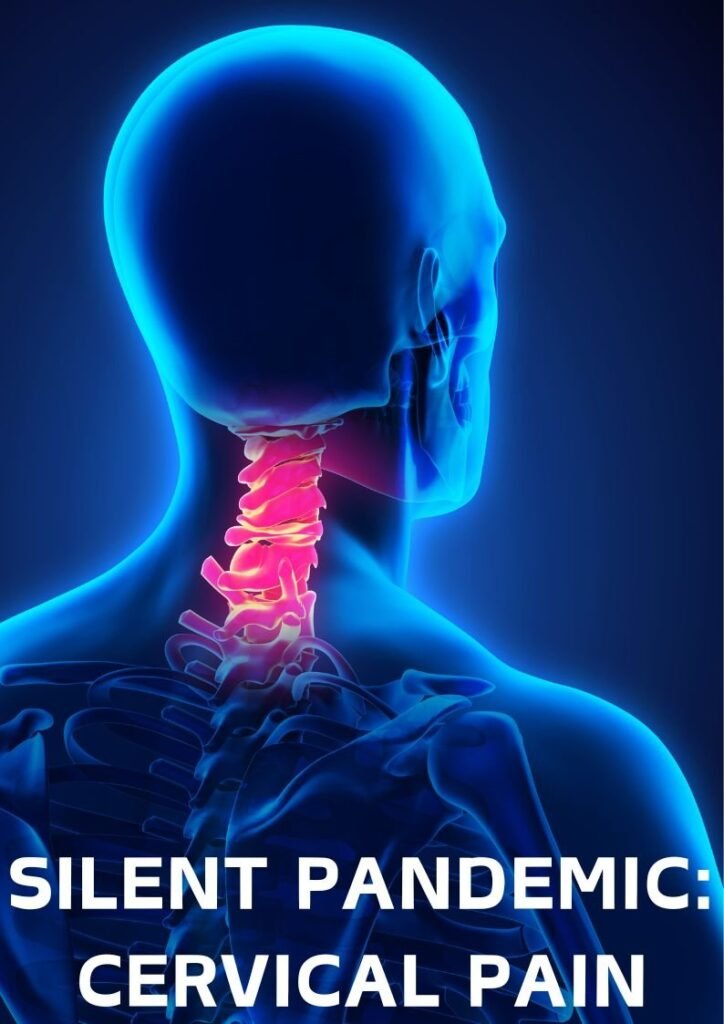
In recent years, as technology has become more ingrained in our daily lives, a silent pandemic has been quietly spreading—cervical pain. The modern lifestyle characterized by increased screen time, sedentary habits, and poor ergonomics has led to a surge in neck-related discomfort and stiffness. In this blog post, we’ll explore the factors contributing to this pandemic, its impact on our health, and most importantly, proactive strategies to mitigate and prevent cervical pain.
The Rise of Cervical Pain: The prevalence of cervical pain has risen dramatically in the digital age, fueled by several key factors:
- Prolonged Screen Time: With the widespread use of smartphones, tablets, and computers, individuals are spending more time hunched over screens, leading to strain on the neck muscles and ligaments.
- Sedentary Lifestyles: Sedentary behavior, including prolonged sitting at desks or in front of televisions, contributes to muscle imbalances and decreased mobility in the neck and shoulders.
- Poor Ergonomics: Improper workstation setup, such as low desks, non-adjustable chairs, and improperly positioned screens, places added stress on the cervical spine and surrounding muscles.
- Stress and Tension: The pressures of modern life, coupled with the mental and emotional strain of the pandemic, can manifest physically as tension and tightness in the neck and shoulders.
Impact on Health and Well-being:
Cervical pain can have far-reaching consequences beyond physical discomfort:
- Reduced Quality of Life: Chronic neck pain can impair daily activities, such as working, driving, and sleeping, leading to decreased productivity and overall well-being.
- Mental Health Effects: Persistent neck pain can contribute to anxiety, depression, and decreased mood, further exacerbating the cycle of pain and stress.
- Long-term Complications: Untreated cervical pain may progress to more serious conditions, such as cervical spondylosis, disc herniation, or nerve compression, necessitating more invasive treatments.
ALSO READ : “Comprehensive Physiotherapy Services by Dr. Shivani Kamra in Delhi, India”
Strategies for Prevention and Management:
Fortunately, there are proactive steps individuals can take to prevent and manage cervical pain:
- Ergonomic Optimization: Invest in ergonomic furniture and accessories, such as adjustable chairs, standing desks, and monitor stands, to create a more supportive workspace.
- Posture Awareness: Maintain good posture while sitting, standing, and using electronic devices. Keep the head aligned with the spine and avoid prolonged periods of forward head posture.
- Regular Movement Breaks: Incorporate frequent breaks to stretch and move the neck and shoulders. Simple exercises like neck rolls, shoulder shrugs, and chest openers can help alleviate tension and improve mobility.
- Stress Management Techniques: Practice stress-reducing activities such as mindfulness meditation, deep breathing exercises, and yoga to relax the mind and body and reduce muscle tension.
- Seek Professional Help: If experiencing persistent or severe neck pain, consult with a physiotherapist or healthcare provider for a comprehensive assessment and personalized treatment plan.
Conclusion
Cervical pain may be the silent pandemic of our time, but it is not insurmountable. By prioritizing ergonomic awareness, movement, stress management, and seeking professional guidance, individuals can take proactive steps to mitigate and prevent cervical pain, reclaiming control over their health and well-being in the digital age. Let’s stand tall, with heads held high—free from the grip of cervical pain.


1 thought on “Unmasking the Silent Pandemic: Cervical Pain in the Digital Age”